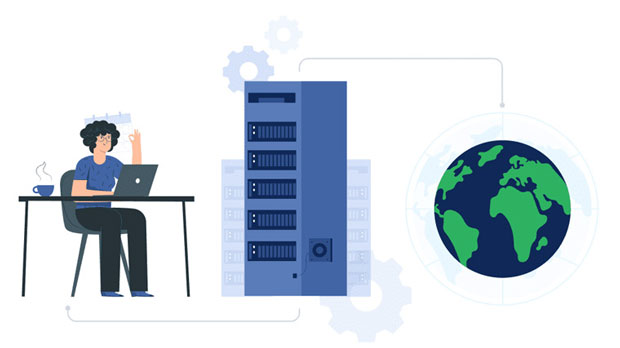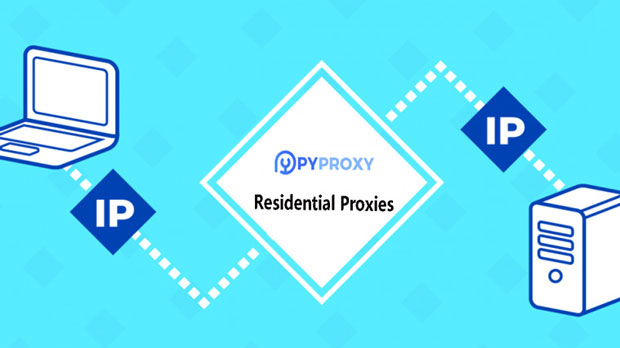In an increasingly connected world, online privacy and security have become major concerns for users worldwide. One of the technologies that have emerged to help mitigate surveillance and tracking is socks5 proxies. SOCKS5 proxies offer a high level of anonymity and are often touted as a reliable solution for bypassing restrictions and hiding one's real IP address. But can SOCKS5 proxies really prevent network tracking and monitoring? This article will explore the features of SOCKS5 proxies, their ability to provide privacy, and their effectiveness in mitigating online surveillance, offering a deep analysis of their real-world applicability and limitations. Understanding SOCKS5 ProxiesSOCKS5 is a protocol used for routing internet traffic through a proxy server. SOCKS stands for "Socket Secure," and the number 5 indicates the protocol's version. Unlike traditional HTTP proxies, SOCKS5 operates at a lower level, handling all types of internet traffic, including HTTP, FTP, and P2P connections. SOCKS5 proxies allow users to route their internet traffic through a third-party server, thereby masking their original IP address. What makes SOCKS5 stand out from other proxy types is its flexibility. It supports a range of authentication methods, provides better security through encryption, and works with all internet protocols. As a result, many users see SOCKS5 as an advanced option for protecting their privacy online.How SOCKS5 Proxies WorkWhen a user connects to the internet through a socks5 proxy, the proxy server essentially acts as an intermediary between the user and the websites or services they are accessing. The user's internet traffic is routed through the proxy server, which replaces the user's IP address with its own. This helps to hide the user's real identity, making it harder for websites or third parties to track them.Additionally, SOCKS5 proxies can also work with authentication protocols, meaning that only authorized users can route their traffic through the proxy. This provides an extra layer of security, as unauthorized attempts to access the proxy can be blocked.However, while SOCKS5 proxies offer a certain degree of anonymity, it is important to understand that they are not foolproof solutions for complete privacy. There are several factors that can undermine their effectiveness in evading network tracking and surveillance.SOCKS5 Proxies and Network TrackingNetwork tracking refers to the methods employed by websites, advertisers, and even government agencies to monitor and track online activity. These techniques can include the use of cookies, IP address tracking, browser fingerprinting, and more. SOCKS5 proxies provide a good defense against certain types of tracking, especially IP address-based tracking. By routing traffic through a proxy, the user's real IP address is hidden, making it harder for websites to trace activity back to a specific individual. This makes SOCKS5 proxies an effective tool in combating traditional forms of tracking, such as those used for targeted advertising or location-based monitoring.However, SOCKS5 proxies are not immune to more sophisticated tracking methods. For example, if a website employs browser fingerprinting techniques, it can still identify a user based on unique characteristics of their device or browser setup, such as screen resolution, operating system, and installed plugins. In these cases, even though the user's IP address is masked, they may still be identifiable through other means.SOCKS5 Proxies and SurveillanceSurveillance typically involves the monitoring of internet traffic by governments, law enforcement, or other entities for purposes such as national security or law enforcement. While SOCKS5 proxies can provide some level of protection against surveillance by masking a user's IP address, they are not a guaranteed shield against these more advanced forms of monitoring.For example, if an entity has access to the proxy server itself, it can potentially monitor all traffic passing through the server. This is a significant vulnerability, as it means that the very entity trying to protect the user’s identity could be compromised. Moreover, in cases of government surveillance, sophisticated techniques like traffic analysis, deep packet inspection, and correlation of traffic across multiple networks could still expose the user, even if they are using a SOCKS5 proxy.Furthermore, some SOCKS5 proxies do not encrypt traffic by default, leaving data susceptible to interception. While SOCKS5 proxies can provide a layer of anonymity by hiding the user’s IP address, they do not necessarily encrypt the traffic being transmitted. This makes the data visible to any entities that have the ability to monitor traffic on the network, such as ISPs or government agencies.Limitations of SOCKS5 Proxies in Privacy ProtectionWhile SOCKS5 proxies are a useful tool for masking one's IP address and providing a degree of anonymity, they come with certain limitations when it comes to privacy protection:1. No Encryption by Default: As mentioned earlier, SOCKS5 proxies do not encrypt traffic by default. Without encryption, data can be intercepted by anyone with access to the network, making it vulnerable to spying.2. Vulnerable to Traffic Analysis: Even if a user’s IP address is hidden, sophisticated techniques like traffic analysis can potentially link their activity to a specific individual. If the traffic pattern is unique enough, it might still be identifiable.3. Server Logs: Many proxy servers keep logs of user activity. If these logs are accessed by third parties or law enforcement, they can potentially trace the user’s activity. It's important to use proxy servers that have a strict no-logs policy to mitigate this risk.4. Not a Complete Privacy Solution: SOCKS5 proxies alone do not offer complete anonymity. Users may still be tracked through browser fingerprinting, cookies, or other web-based tracking techniques. Additionally, SOCKS5 proxies do not protect against malware or phishing attacks.Best Practices for Enhancing Privacy While Using SOCKS5 ProxiesWhile SOCKS5 proxies can offer enhanced privacy and security, it is important to use them in conjunction with other privacy-enhancing tools for maximum protection. Here are some best practices for enhancing privacy while using SOCKS5 proxies:1. Use HTTPS Websites: Always ensure that the websites you visit use HTTPS, which encrypts the data between your device and the server. This can provide an additional layer of security on top of the SOCKS5 proxy.2. Combine with VPNs: A Virtual Private Network (VPN) provides encryption and can be used alongside SOCKS5 proxies to enhance security and privacy. By encrypting your traffic, a VPN adds a strong layer of protection against surveillance and traffic analysis.3. Disable Cookies and Tracking: Use browser settings or extensions that block cookies, prevent fingerprinting, and disable tracking mechanisms on websites. This can further reduce the chances of being identified or monitored.4. Choose a Reliable Proxy Provider: Use a proxy service that has a strict no-logs policy and provides additional privacy features, such as IP rotation or multi-layer encryption.ConclusionSOCKS5 proxies are a powerful tool for enhancing online privacy by masking a user’s IP address and bypassing geographic or network-based restrictions. They are particularly effective at countering basic forms of network tracking, such as IP address tracking. However, when it comes to more advanced surveillance techniques, SOCKS5 proxies are not foolproof. They do not encrypt traffic by default, making them susceptible to interception. Additionally, users must be aware of other forms of tracking, such as browser fingerprinting, that may still expose their identity.To achieve the highest level of privacy, SOCKS5 proxies should be used in combination with other privacy tools like VPNs, encrypted communication protocols, and anti-tracking browser settings. While SOCKS5 proxies offer a valuable layer of anonymity, users must understand their limitations and use them as part of a broader strategy for online privacy and security.
Jan 08, 2025






















































